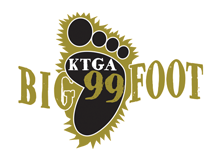July 28, 2022 |
No more free lunch: School starts in less than a month. And for the first time in two years, breakfast and lunch will not be free to all students. The Department of Agriculture Free Breakfast and Lunch Program that went into effect at the start of the COVID-19 pandemic has ended.
As part of the first wave of federal COVID-19 relief programs, the USDA abandoned income requirements for school meals. Instead two free meals were served—often remotely because of lockdowns—to all students, regardless of income. That USDA’s authority to waive the regulations expired on June 30th, and Congress chose not to renew it.
The two school districts in Carbon County are preparing to return to the pre-COVID pay system. Both districts have re-established meal prices and policies for the school year that begins in a few weeks.
At Carbon 2, first-year Superintendent Darren Jennings explained what the change means for the schools in Elk Mountain, Encampment, Hanna and Saratoga.
Audio PlayerPictured above: Photo courtesy Wyoming Angel Accounts/Wyoming Hunger Initiative website.
The USDA’s Community Eligibility Provision, allows schools, like the one in Medicine Bow, serving many high-need students to provide all meals for free without collecting applications from families. The Free and Reduced Lunch Application for Carbon School District 2 can be found at the home page under “Publications” and “General Forms.” The federal eligibility income chart includes the size of the household matched with income levels, weekly monthly or yearly. Jennings explained the new pricing.
Audio PlayerThe applications for both the free reduced price school meals combine on the same link on the Carbon 2 website. The superintendent said the free lunch program was popular and attracted a high rate of participation.
Audio PlayerThe same was true at Carbon 1, where Food Services Director Tammi Ratcliffe is preparing for the upcoming school year. Participation was high for the free meals. As Ratcliff and her team shift gears to return to a pay system, she recalled when the free meal plan went into effect in 2020.
Audio PlayerWhen the federal government launched the universal free meal program, it allowed schools to operate under summer guidelines, which have laxer nutrition requirements. Ratcliff said the USDA modified the guidelines in the second year, and required schools to switch to the stricter protocols of the National School breakfast and lunch programs.
Audio PlayerThe stricter nutritional protocols are in effect for the upcoming school year. The Carbon 1 website is filled with easy to read instructions on how income eligible families can apply for the free and reduced meal pricing. The costs are similar to Carbon 2. Elementary breakfast and lunch costs $2.00 and $3.00 respectively. Secondary breakfast and lunch is $2.25 and $3.25. Adult breakfast is $4.00. Adult lunch is $5.00.
Applications for the free and reduced meals started July 1st. Ratcliff encourages families who want to take advantage of the discount pricing to apply before school starts.
Audio PlayerAlthough eliminating the free lunch program to schools this year, the USDA increased the reimbursement schools receive by approximately $0.68 for each free or reduced price lunch and $0.32 per free or reduced price breakfast.
The increase may not be enough to cover the inflated cost of food. Ratcliff said basic food products are up by at least 20 percent even when purchasing inventory through a co-op that gives her department more buying power because of generally lower prices.
Based on the posted pricing, the cost of a full-priced breakfast and lunch five days a week will be approximately $100 per month for a K6 child, $110/month for secondary students in both school districts. Ratcliff said she is being proactive about getting the word out about the change and how to apply for the free or reduced pricing.
Audio PlayerRatcliff said she has not received much feedback, one way or the other, from parents about the elimination of the free lunch program. The change may not have registered yet because everyone is still enjoying summer and not thinking about school yet. Ratcliff said she did see a decrease in participation in the summer lunch program. She said she and her team may not have served as many lunches because people didn’t feel as locked down as they have the past two summers because of the coronavirus.
At Carbon 2, Superintendent Jennings said he has not received any feedback either about the return of the pay system for school meals.
The school year starts August 18th for Rawlins. The Carbon 2 schools and the Little Snake River schools, which are part of Carbon 1, start August 23rd.













